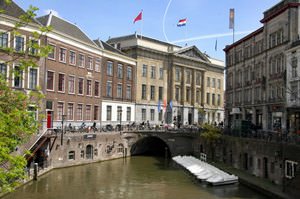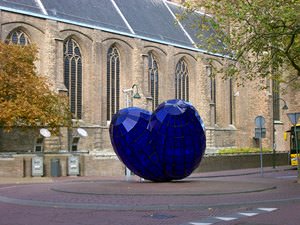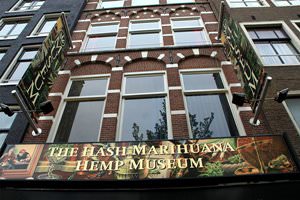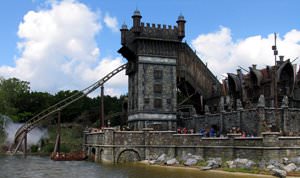
The Netherlands is a country of lowlands. The majority of its territories are below the sea level, and therefore the local inhabitants had to take back their own lands from the seas for centuries. Today, many dams, castles and fortifications remind about protecting the coastline from flooding. Only 2 percent of the Netherlands’ lands are above 50 km above sea level. If there were no fortifications, the half of the country would be under water. However, it was a war with the sea that gave the state such a large number of recovered fertile lands, where today legendary tulips and other flowers grow. In the Netherlands, there are lots of reservoirs and river arteries. The largest rivers are the Rhine, the Meuse, and the Scheldt.
The Netherlands has a fairly long coastline along the North Sea; it’s about 450 km. Therefore, the centers of the active leisure are located mainly …
Read further
Several major national parks are located on the territory of the Netherlands. The indulgent summer, when the average temperature in July is about 18 degrees Celsius, makes hiking comfortable and even more interesting. It is important to consider that the climate is quite rainy, and therefore, when going outside, you need to know the weather forecast. The oldest is Veluwezoom Park. It is located on 50 square meters, close to the province of Gelderland. Natural forests grow there; roe deer, foxes, badgers, red deer, martens, white-tailed eagles, and other animals live in the reserve. Another large national park is the De Hoge-Veluwe Park. One of the largest open-air museums in Europe is situated there.
The Zuid-Kennemerland National Park is visited annually by more than 2 million people. It is located on the seashore. The place borders with a beach that is not part of the protected lands. This is a very picturesque nook with dunes and beautiful deciduous and coniferous forests. The park is home to a large number of foxes, rabbits, and deers. Local workers have developed a special breed of cows, the Scottish longhair. There are also several lakes in the park, as well as the ancient Dainulust castle dating back to the 19th century. Several tourist trails and bike routes have been laid along the territory for the convenience of tourists. Copyright www.orangesmile.com
1. Don’t go to the Netherlands in a fur coat or other outerwear made of natural fur. Animal rights activists can attack and even set the item on …
Read further
The lush flora is typical for the Netherlands. The most popular tulips, roses, and lilies in the world grow here. All these plants are actively used in the landscape design of parks and gardens. Artificial lakes and canals are set there too. This only emphasizes an important feature of the country - the landscape is really artificial. A vivid example of garden art is the landscape of the castle of Het Loo. It's not just beautiful plants growing around the fortress. The landscape here here is a real piece of art. Gardens combine elements of baroque and classicism; there are oak and pyramidal yew alleys. Adorable patterns are created of plants.
![Delft Delft]()
In the small botanical garden of Amsterdam, there are more than 200 thousand different flowers. This is one of the most planted gardens in the whole country. Walking along its shady avenues, you can relax from the crazy rhythm and lifestyle, and enjoy the magical beauty of nature. Very beautiful and picturesque places for recreation can be found in Limburg. Gardens of Arsen feature 5 different branches. Tourists can admire rosary, shadow, water and other gardens, in which, in addition to amazing plants, there are flamingos, storks, owls and other animals.
 The Netherlands is a country of lowlands. The majority of its territories are below the sea level, and therefore the local inhabitants had to take back their own lands from the seas for centuries. Today, many dams, castles and fortifications remind about protecting the coastline from flooding. Only 2 percent of the Netherlands’ lands are above 50 km above sea level. If there were no fortifications, the half of the country would be under water. However, it was a war with the sea that gave the state such a large number of recovered fertile lands, where today legendary tulips and other flowers grow. In the Netherlands, there are lots of reservoirs and river arteries. The largest rivers are the Rhine, the Meuse, and the Scheldt.
The Netherlands is a country of lowlands. The majority of its territories are below the sea level, and therefore the local inhabitants had to take back their own lands from the seas for centuries. Today, many dams, castles and fortifications remind about protecting the coastline from flooding. Only 2 percent of the Netherlands’ lands are above 50 km above sea level. If there were no fortifications, the half of the country would be under water. However, it was a war with the sea that gave the state such a large number of recovered fertile lands, where today legendary tulips and other flowers grow. In the Netherlands, there are lots of reservoirs and river arteries. The largest rivers are the Rhine, the Meuse, and the Scheldt.
 In the small botanical garden of Amsterdam, there are more than 200 thousand different flowers. This is one of the most planted gardens in the whole country. Walking along its shady avenues, you can relax from the crazy rhythm and lifestyle, and enjoy the magical beauty of nature. Very beautiful and picturesque places for recreation can be found in Limburg. Gardens of Arsen feature 5 different branches. Tourists can admire rosary, shadow, water and other gardens, in which, in addition to amazing plants, there are flamingos, storks, owls and other animals.
In the small botanical garden of Amsterdam, there are more than 200 thousand different flowers. This is one of the most planted gardens in the whole country. Walking along its shady avenues, you can relax from the crazy rhythm and lifestyle, and enjoy the magical beauty of nature. Very beautiful and picturesque places for recreation can be found in Limburg. Gardens of Arsen feature 5 different branches. Tourists can admire rosary, shadow, water and other gardens, in which, in addition to amazing plants, there are flamingos, storks, owls and other animals. 



